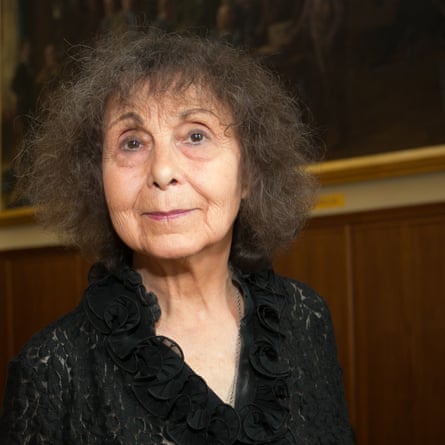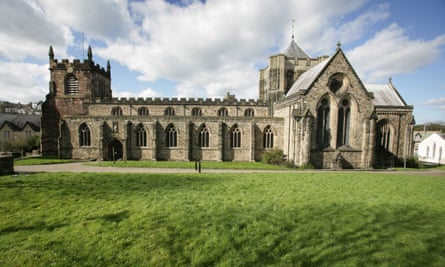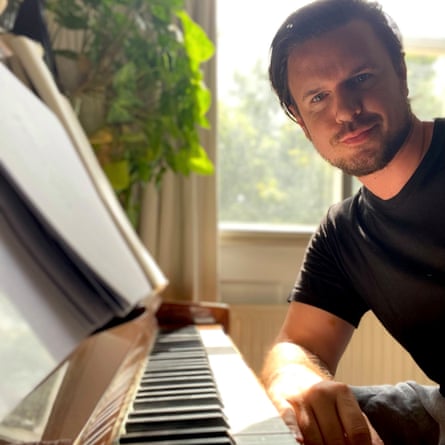I felt hugely honoured when I was asked to compose a new setting of Christ’s Seven Last Words for Easter this year. I also felt the weight of 500 years of tradition on my shoulders.
The canon of works that transport us to the foot of the cross to witness Jesus’s final words includes delicate Renaissance polyphony, grand oratorios, masterful contemporary works, and even musical theatre (thanks, Andrew Lloyd Webber). What could another new version possibly bring to the table?
Welsh, for a start. When it’s premiered on Good Friday at Saint Deiniol’s Cathedral in Bangor, my composition Saith Air y Groes will be the first ever Seven Last Words to be sung in Welsh.
For those of you trying to remember what Christ’s Seven Last Words were, they’re not actually individual words at all. They’re seven distinct statements, beginning with the familiar, “Father, forgive them, for they know not what they do”, before cycling through different emotional states, such as “I thirst” and “It is finished”, and ending with the epic, “Father, into your hands I commend my spirit.”
How do we know he said all this? We don’t. The Seven Last Words are a harmonisation that unites quotes from the different accounts of the crucifixion in the four gospels to create a single narrative in the shape of these seven sentences. Together, the words provide the complete spiritual architecture of Christian existence. No wonder they have inspired composers for centuries.
The tradition of setting them to music evolved out of medieval Passion settings. An extraordinary early example is Maria Plena Virtute, written circa 1510, by Robert Fayrfax, one of Tudor England’s most significant composers. The Latin text contains six of the seven last words (and paraphrases the seventh) in an intimate meditation on the Passion story that moves between narrative and personal contemplation.
Meanwhile, Heinrich Schütz’s setting from 1645, widely considered to be the first complete musical setting of the Seven Last Words, creates immediacy through characterisation. We have moved from Renaissance polyphony to baroque oratorio. Jesus is sung by a solo tenor. A choral prelude and postlude offer commentary; narrative is delivered in recitative-like passages. For me, something of the text’s secret power is lost in this formalised dramatic structure, but the laser-sharp clarity of how Schütz sets the German vernacular text, (compiled from the Luther Bible) is an inspiration.
When it came to setting the Welsh, I used a simple, unadorned approach, similar to plainchant – the unaccompanied early Christian musical tradition of chanting the liturgy in unison, which is also a feature of James MacMillan’s mesmerising setting from 1994. My aim was for a clear and direct, yet solemn, presentation of the powerful text, which is taken from the first complete translation of the Bible into Welsh by William Morgan, published in 1588.
Joseph Haydn’s instrumental Seven Last Words, first performed in Cádiz on Good Friday 1787, asks if words are even needed at all. “Each of the texts is represented and expressed purely by instrumental music … in such a way as to awaken the deepest feelings within the soul,” Hadyn said.
Nearly 200 years later, the Russian composer Sofia Gubaidulina also wrote an instrumental Seven Words. Her beautiful piece for solo cello, bayan (Russian accordion) and string orchestra is raw and painful. Almost cinematic outbursts describe the horror of the scene, contrasted with moments of profound luminescence from chorale-like strings that speak of unconditional love, forgiveness and transcendence.
Gubaidulina pinpoints the challenge facing any composer writing music about the crucifixion: how to express an archetype of human suffering as well as universal love – in the same piece. Every setting wrestles with this. MacMillan pits shockingly violent “hammer-blows” in the strings against otherworldly choral writing. The doom-laden opening chords and chilling brittleness of guitar-picked glissandi in Nico Muhly’s 2022 piece, The Street (14 meditations on the stations of the cross), contrast with a bittersweet berceuse for the fourth station, when Jesus meets his mother, and a haunting unsung setting of “However low I fall, let me not fall far from you”, from Alice Goodman’s jaw-dropping text.

I chose to interpret this dichotomy as the solemnity of suffering versus the triumph of transcendence. The bittersweet, crushed harmonies underscoring the words “maddau iddynt” (forgive them) express the ambivalence of loving those who cause you the most harm. The arid austerity of “Y mae syched arnaf” (I thirst) gives way to more joyful and mellifluous melodies and the promise that God will provide for us. The text in the final movement is chanted repeatedly, sometimes solemnly, sometimes triumphantly – expressing the stark duality of the unfolding events on the cross.
Music is good at expressing these complex, abstract emotions and spiritual dimensions of Jesus’s final hours. But many of these pieces stay anchored to the physical world, too, most notably by the inclusion of musical depictions of the cross itself.
In Gubaidulina’s work, long drawn-out drones of the cello and bayan are crossed through with vertical gestures from the string orchestra. Monumental cruciform shapes are traced out in the score with multiple strings glissandi. When the cellist’s bow steps behind the bridge in the final movement, it’s a symbol of crossing over into another world. In Arvo Pärt’s incredibly austere yet beautiful setting of the St John Passion, Passio, the 75-minute narrative unfolds according to several pre-ordained patterns, all derived from chiastic, or X-shaped, structures.
My setting also begins and ends with cruciform melodies: where lines drawn between two pairs of pitches create the shape of a cross. Whenever these appear, they gradually get bigger as the musical intervals expand, expressing the enormity and inevitability of the crucifixion.

This brings me to the final challenge: how to end it. Haydn, after all of that adagio loveliness, ends suddenly with a furious depiction of the earthquake that corresponded with Christ’s death. I end mine with a little surprise too – one that speaks of transcendence. Fayrfax concludes ecstatically, with an extended “Amen”. Gubaidulina chooses a breathless solo cello that flatlines into nothingness. MacMillan draws on traditional Scottish lament music in a haunting instrumental postlude, bringing something unique of his homeland, and his identity, to the setting of a text that is universal.
My setting, in Welsh and of Wales in so much of its inspiration, has likewise allowed me to bring my own sense of identity. But, more than that, the piece is part of a movement to nurture a stronger sense of identity for the church at a time when census figures reveal that Wales is the least Christian country in the UK.
“We need to be talking about God in all the ways across the spectrum that people in Wales might encounter or explore God”, Canon Siôn Rhys Evans, who commissioned the piece, told me. “It’s much more than Bible readings and sermons … That’s why commissioning music in Welsh, and by Welsh composers, is so important.”
My piece is created not as a monumental piece of art to evoke the fear of God, but to bring people together in communal reflection and personal contemplation of the universal messages of friendship, forgiveness, and unconditional love. If I manage to achieve even just a tiny bit of this, I will be a very proud composer indeed.

